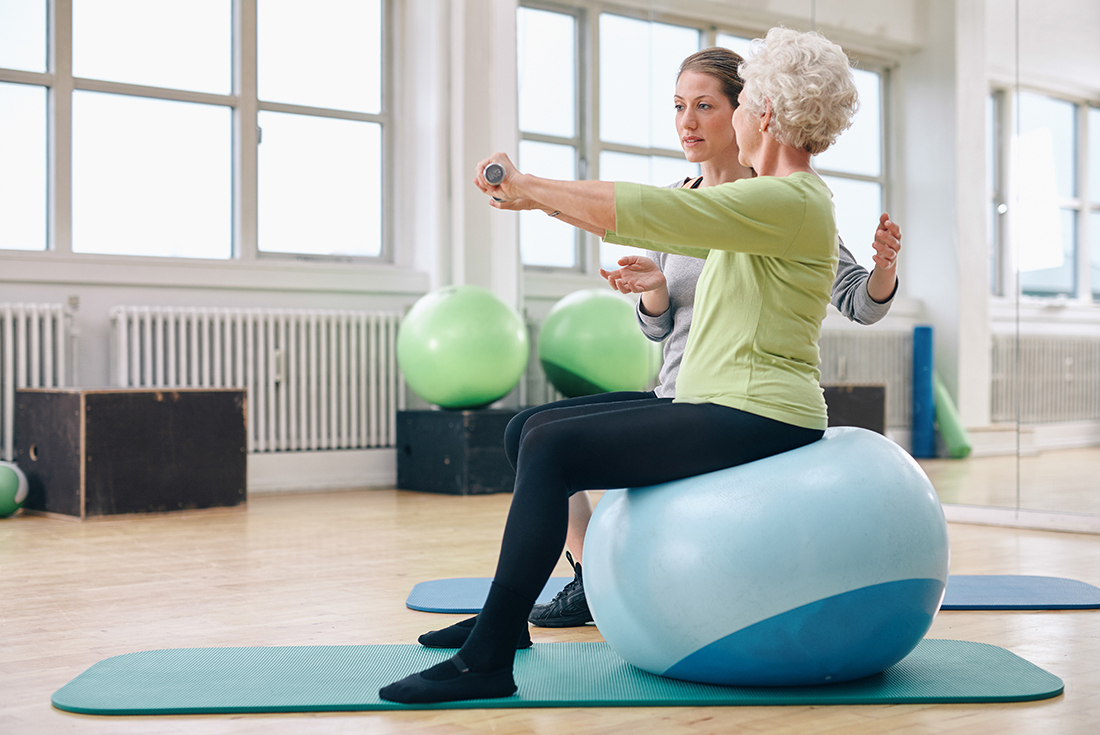At any age, balance exercises can help keep you moving, boost your confidence and mental clarity and keep you steady for years to come.
If you’re an older adult, balance exercises are especially important because they can help you prevent falls and maintain your independence. Longevity researchers agree that good physical balance can turn back the clock not only physically but also functionally.Good balance can also support brain function and ease anxiety. Researchers concluded that people who took part in balance exercises had greater cognitive gains than those who did not. Staying in the moment while performing these movements calms anxiety.
Balance begins in your core. If you have weak core muscles you are more prone to falls, decreased mobility in the spine, lower back injuries and slower reflexes. Targeted exercises help strengthen your core, and a strong center can prevent everyday injuries. Almost any activity that keeps you on your feet and moving, such as walking, can help you maintain good balance.
Physical therapists offer numerous options for treating balance problems, based on each person’s needs. They are trained to evaluate multiple systems of the body, including the muscles, joints, inner ear, eye-tracking ability, skin sensation and position awareness in the joints (proprioception). Your therapist will prescribe active movement techniques and physical exercise to improve these systems, including strengthening, stretching, proprioception exercises, visual tracking, and inner ear retraining.
By identifying the cause of your balance issues, your physical therapist can design an individual treatment program to address your specific needs, including exercises you can do at home, such as:
- Be a Tree – Standing on one leg, while you lift the other forward, to the side, and back, is one of the simplest places to start practicing balance. When you first start, be sure you have something to grab or lean on for safety.
- Have a Ball – Sit on a stability ball with your feet planted flat on the floor, shoulder-width apart. Lift and extend one leg at a time, while simultaneously raising your opposing arm to shoulder-level.
- Leg Swing – Start by standing with your arms at your sides and feet shoulder-width apart. Lift one leg to a 45-degree angle and swing it back and forth at least 10 times before switching.
- Drinking Bird – Begin by standing on one leg with lifted leg at a 45-degree angle. Bending at the waist, lean forward to touch the ground. Then, with one hand touch the ground.
One set of the exercises listed above will take about 5 minutes. Dedicate 5-15 minutes per day, or per week, to this routine and you will see the benefits in less than 2 weeks.
By training to develop greater balance, you will recognize improvements in coordination, athletic skill, and posture. This in turn should result in fewer injuries and greater stability. With balance training, you can master what once seemed like impossible tasks when you were young, like riding your bike without training wheels or making it to the bottom of the bunny slope without falling. It’s never too soon to develop the moves that will keep you on your feet for years to come.

